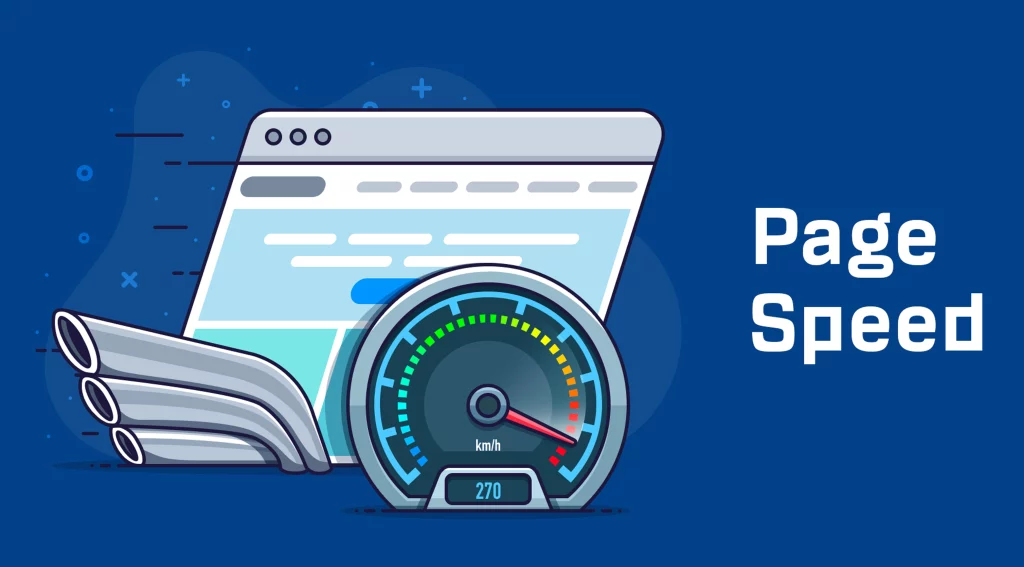SEO, or search engine optimization, is an extremely important part of marketing. When you optimize your web pages, including your blog posts, you make your website more visible to people who are looking for your product or service on search engines like Google. But does the content of your blog really help your business rank higher on search engines in a natural way?
You’ll find the answer to this question and more in this article. Get ready for an in-depth look at blog SEO, the things that affect it, and how to start optimizing your blog site for search engines.
Double Your Blog's Traffic and Leads with SEO
It is evident that blog content contributes to SEO, yet Google’s continuous algorithm tweaks might make it difficult to write the correct kind of blog content. If you want to improve your blog’s search engine optimization (SEO), here are some of the most important ranking factors that have been around for a long time.

1- Dwell time
Dwell time is an indirect Google ranking element, but it’s crucial for user experience, and user experience is king in SEO. Dwell time is how long a reader stays on a blog page. It is the time between a visitor clicking on your SERP listing and leaving the page. This tells Google how useful your material is to readers. The longer they stay on a page, the more relevant it is.
This measure is subjective, thus it’s an indirect SEO indicator. Your content approach is unknown to search engines. Your blog might feature brief, two-minute posts. For the greatest reader experience, offer relevant information at the beginning of your blog posts. Yes, dwell time affects SEO, but don’t edit your content to change it if it doesn’t make sense.
2- Page speed
You may have heard that your blog’s design might affect page performance, but this isn’t all there is to it. Using too many plugins and unnecessary code might also slow down a blog. It is possible to speed up the loading time of your websites by removing unnecessary code. Check out HTML-Cleaner if you’re unsure how to detect and delete garbage code. Using it doesn’t require any coding experience. A simple click of a button removes all superfluous code from your website.
Taking a look at your blog’s plugins is a good idea, too. You need to decide which ones you need to keep your blog running on a daily basis and which ones were added as a short-term repair. Site speed is threatened by plugins that affect the front-end, and you may be able to remove more of these plugins than you realize to improve overall site performance.
3- Mobile responsive
Mobile devices account for more than half of Google’s search traffic. Your blog site may also follow this trend on a personal level. Your SEO stats will suffer if you don’t optimize your blog site for mobile visitors. The question is, what precisely does it mean to optimize a website for mobile devices? Keep it simple, says the industry rule of thumb. All you need to do is change a CTA button here and raise the font size there to make your site mobile-friendly. Google Analytics and a mobile speed test are great ways to keep an eye on the performance of your site on mobile devices.
4.Index Date
Search engines are designed to deliver the most pertinent and correct information that can be found. The date that a search engine indexes the content is one of the factors used by search engines to determine whether the information is relevant and accurate. The act of a search engine discovering new content and adding it to its index is referred to as indexing. After some time has passed, the page can be recovered and shown in the SERP when a user searches for terms that are associated with the indexed page.
You could be wondering if the date the content was indexed is the same as the date it was published. This is a reasonable question.
In a word, yes and no is the answer. When a new blog post is published for the first time, there is a good chance that a web crawler, such as Google’s, will index that post on the same day that you publish it. Backdating content, on the other hand, is possible for a variety of very reasonable reasons, such as preserving information or changing a sentence or two.
The use of a historical optimization plan is one way to have a beneficial impact on this SEO aspect. This tactic is useful for sites that have been around for a few years and already have a significant volume of information available to their readers. You’ll be able to drastically improve the search engine optimization of your blog without adding a lot of brand new material if you just revisit some of your earlier pieces and update them with fresh insights and facts. The page will be reindexed by site crawlers, who will take into account the modified material, and it will be given another chance to compete in the search engine results page (SERP). It really is a win-win situation for all parties.
5- Data from the last few months
Indirect ranking factors such as the most recent data should be incorporated into blog postings as well. Data that is current and accurate helps visitors have a great reading experience. The viewers will benefit from your inclusion of a link to a reliable source that provides original, up-to-date data (which is a plus for that other site). You’re also indicating to the search engine that this data is somehow relevant to the information you’re posting. Increased time on the page and decreased bounce rate can be used to show that your users are appreciating your content.

How SEO help to Boost Search Engine Traffic to Your Blog?
Decide who you want to reach with your blog.
In every sector, you’ll want to identify and talk to the key audience that will read y
our posts. Your blog strategy will be guided by an understanding of your audience and what you want them to do when they click on your content.
It is possible to target readers based on their purchasing habits, demographics, and psychographics using buyer personas. It’s possible that you’ll be writing perfectly right and accurate material, but no one will click on it since it doesn’t resonate with them personally. Without this knowledge.
Perform a keyword study.
Your buyer persona is complete, so it’s time to find out what kind of content your target audience is looking for. If you don’t have a plan, keyword research can be a daunting task. As a result, I suggest beginning with the topics you plan to cover on your blog and then broadening or narrowing your focus from there. Check out our comprehensive guide to keyword research for more information.
Include images.
For certain keywords, search engines such as Google give preference to images that are present in the search results. On the search engine results page, images and videos are the most common visual elements. If you want your blog post to appear in an image pack or a video snippet, you’ll need to create eye-catching visuals, use original photography and video, and include descriptive alt text for each image and video.
Your image or video’s alt text has a significant impact on whether or not it appears in the SERP, as well as how prominently it does. To ensure that visually impaired readers have a positive experience on your blog, you should use alt text.
Make sure the title is catchy.
Whether or not a reader decides to click on your blog post depends on the title, which is the first thing they see when they come across it. It’s important to have an attention-grabbing title that includes data, a question, or an intriguing lead.
The Co-scheduler Headline Analyzer identifies power, emotion, uncommon, and common words as key components of a memorable headline. Using these words in a blog title is a great way to entice your readers and keep them reading.
Put the reader at the center of your writing.
The reader’s experience is the most important part of a blog post, according to any good writer or SEO. Readability, formatting, and page speed all play a role in the overall experience for the reader. Your content should be clear, concise, comprehensive, and accurate to the most recent data or trends in your field. Headings and subheads are also important because they help the reader quickly scan the content to locate the information they are looking for. Lastly, on-page elements, such as images and videos, have an impact on page speed. Keep image file sizes under 250 KB and limit the number of videos you embed on a single page to avoid overcrowding the page. In order to publish an article optimized for the search engine, you must focus on what the reader wants to know and organize the post accordingly.
Even if you don’t use these SEO best practices right away, we don’t expect you to do so. However, as your website grows in popularity, so should your SEO goals. You’ll be on the right track to delivering relevant content that will climb the SERP ranks once you identify the goals and intent of your ideal readers.
